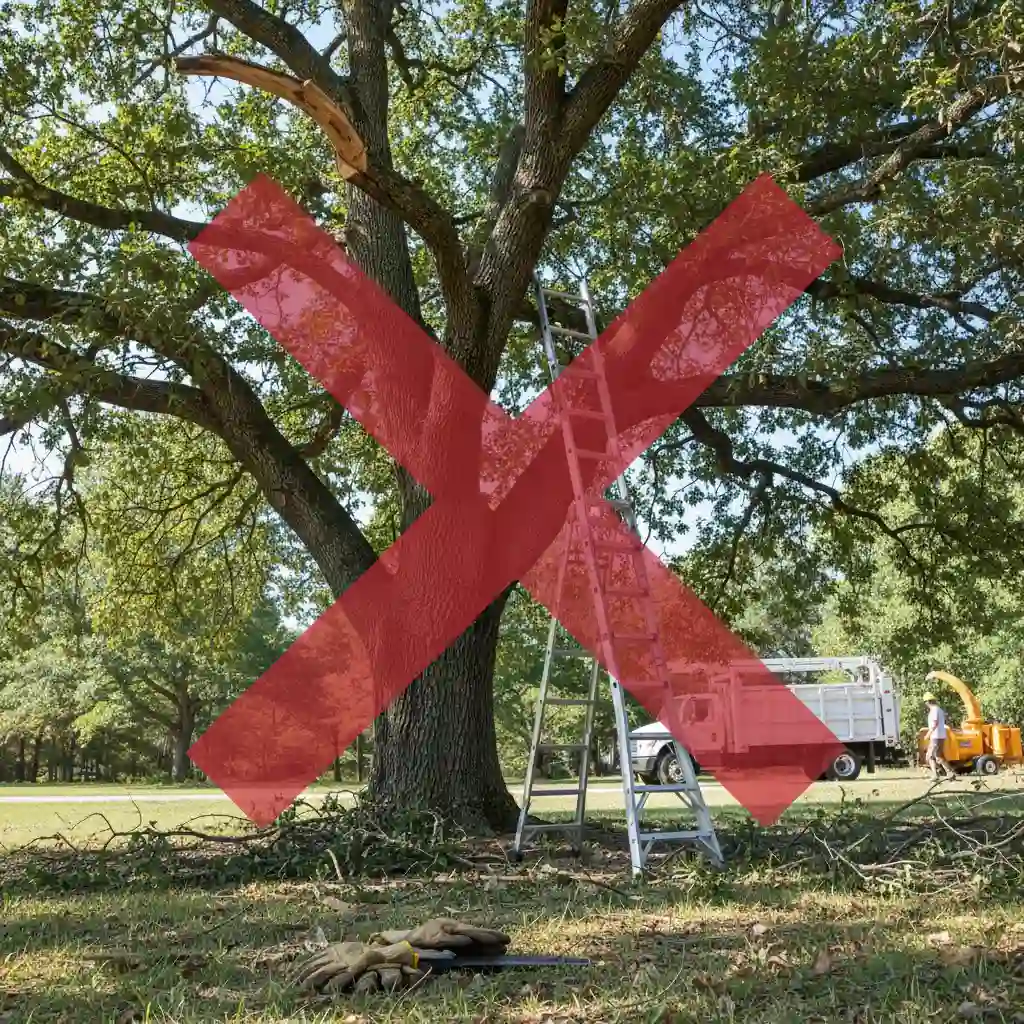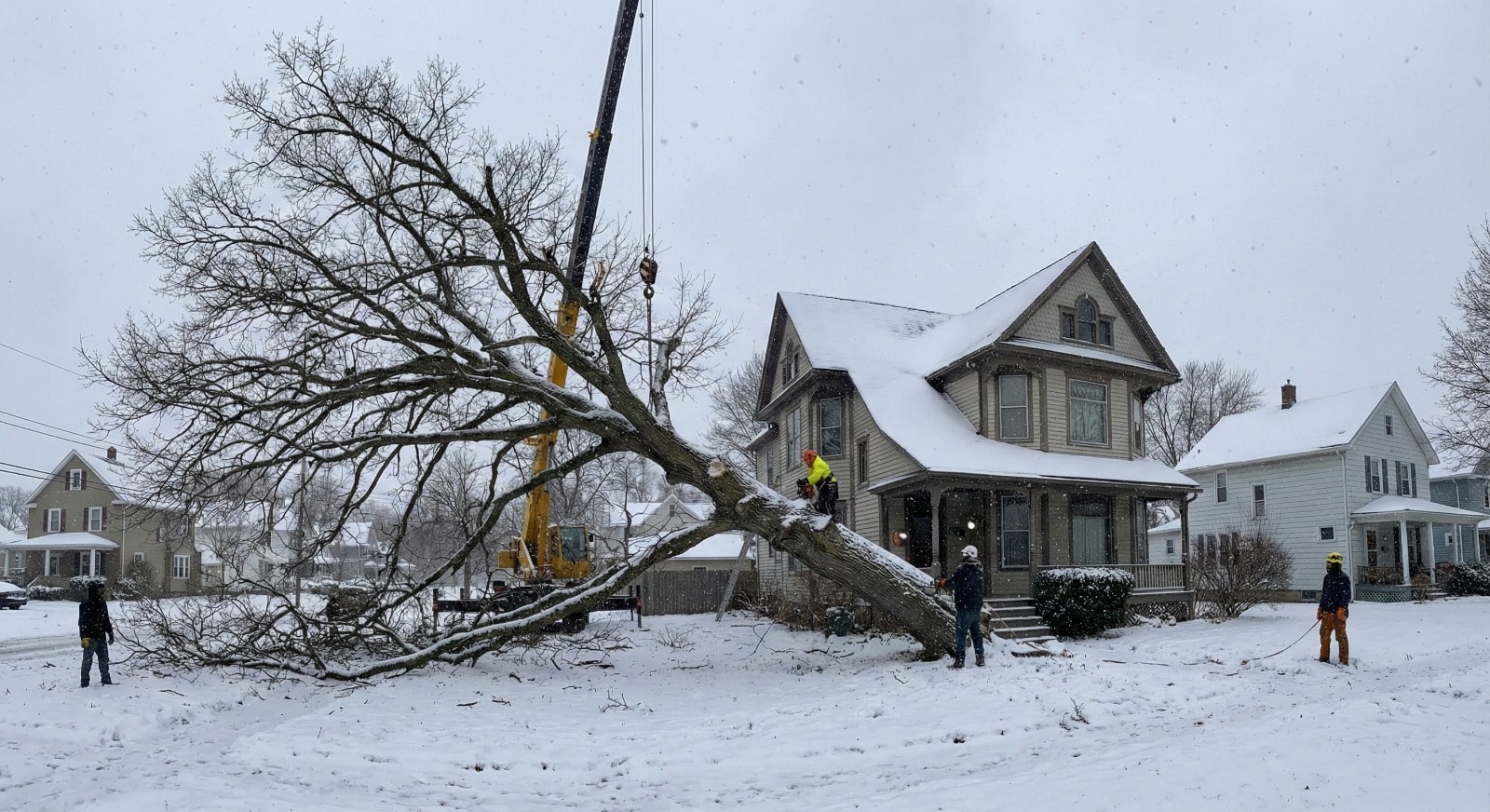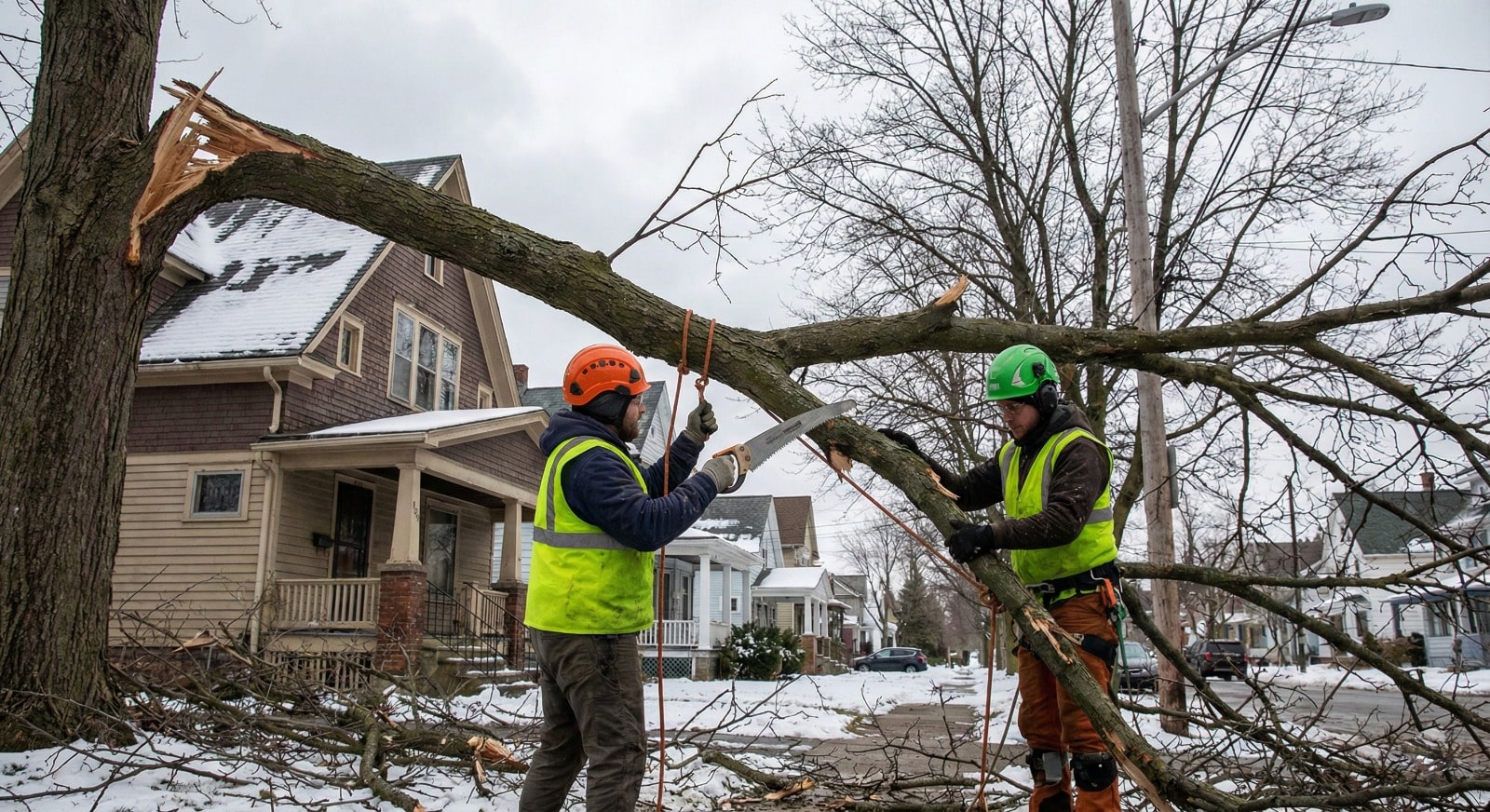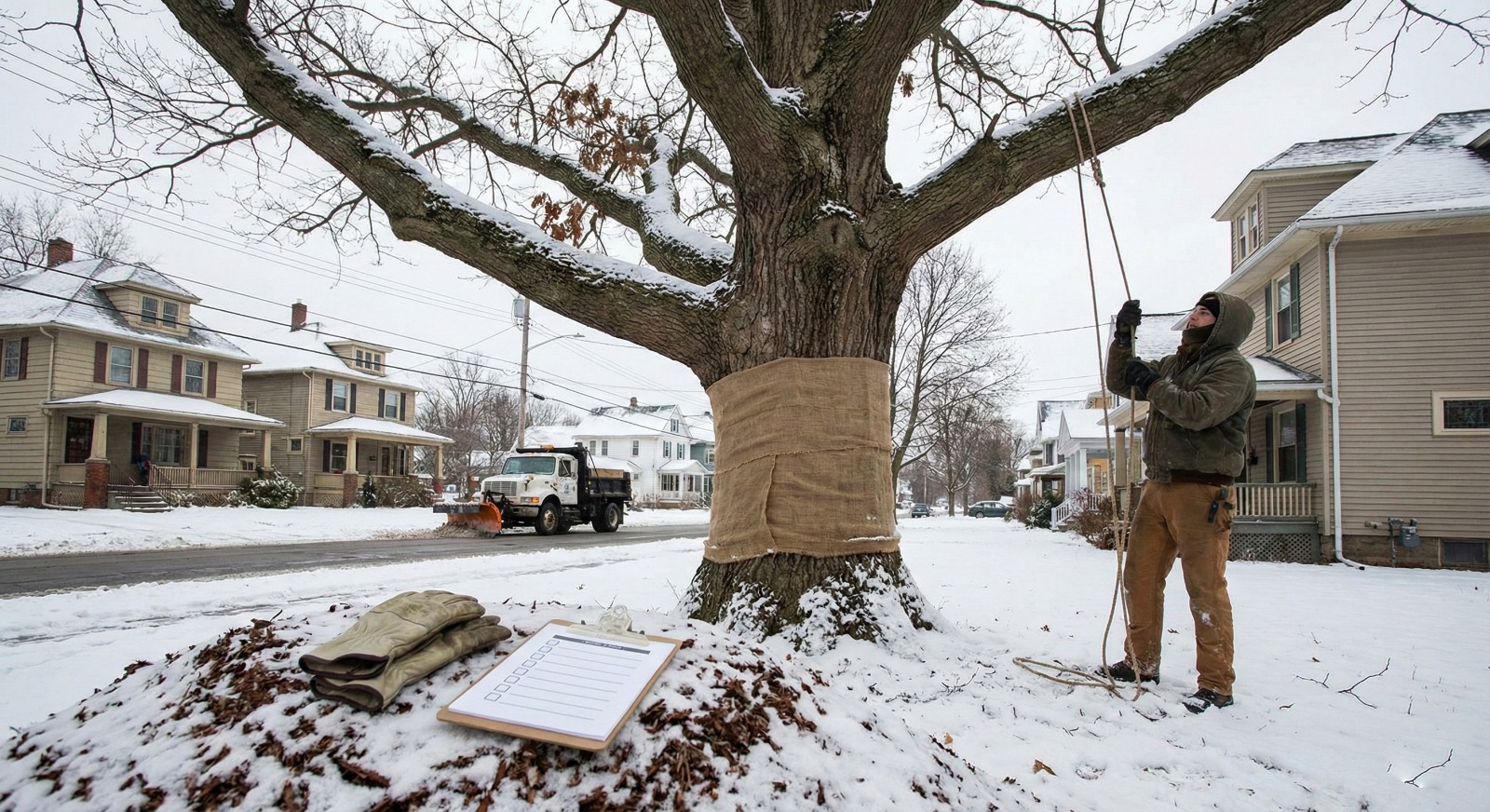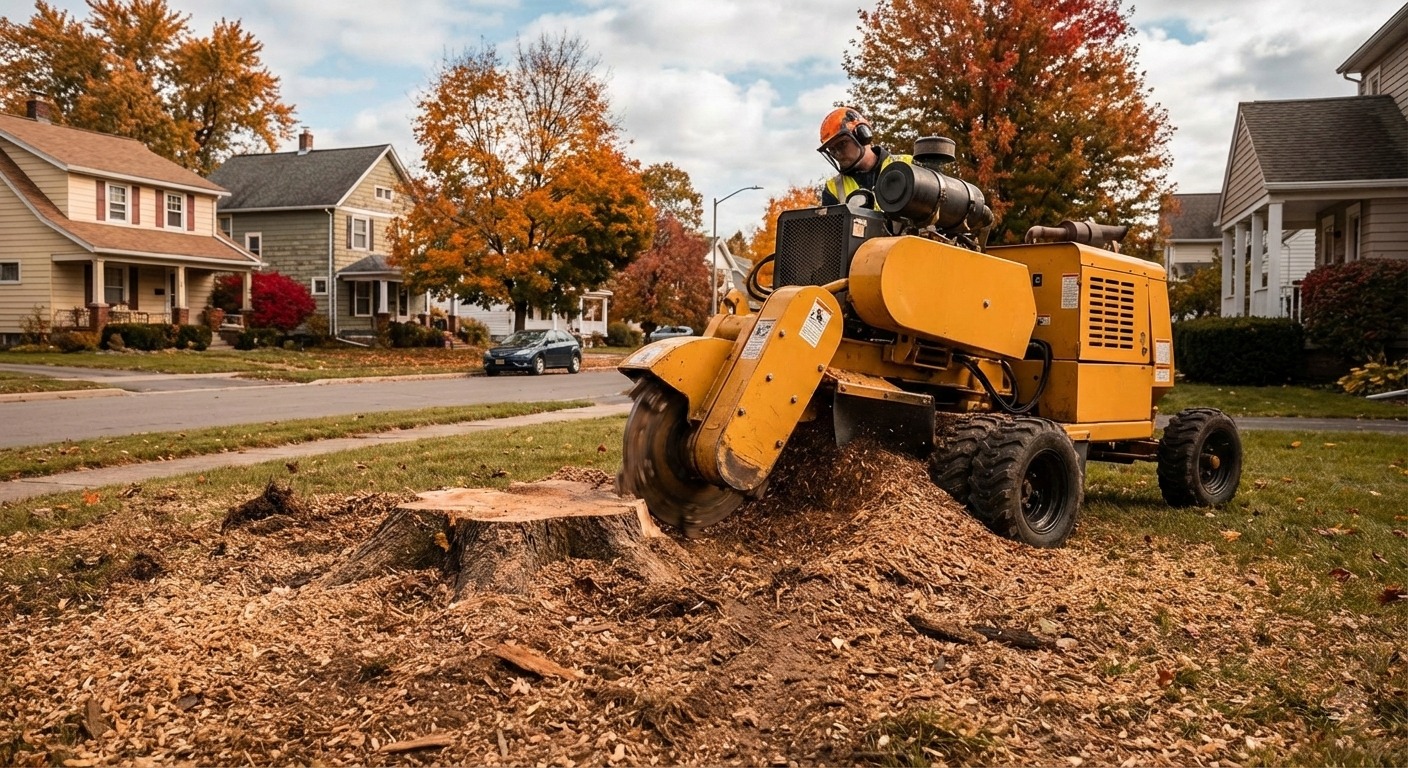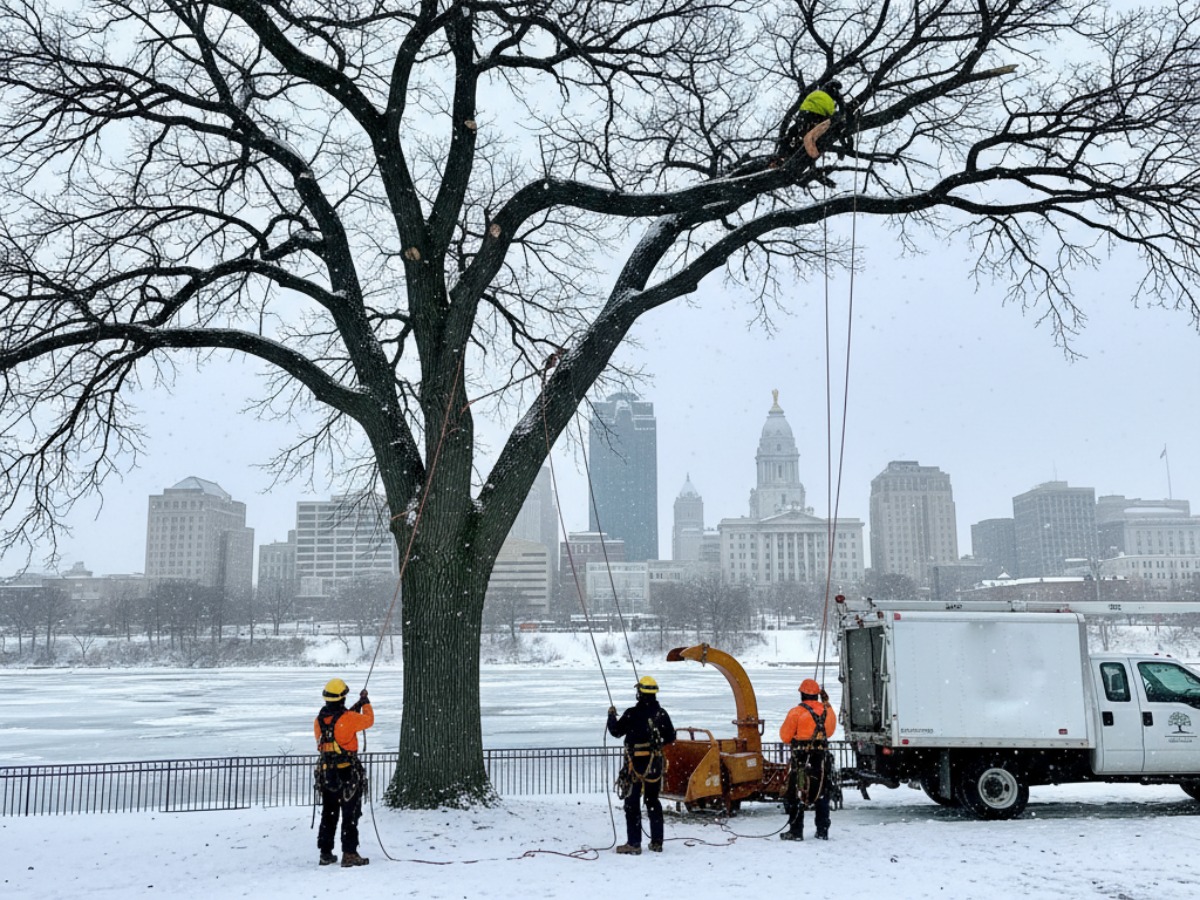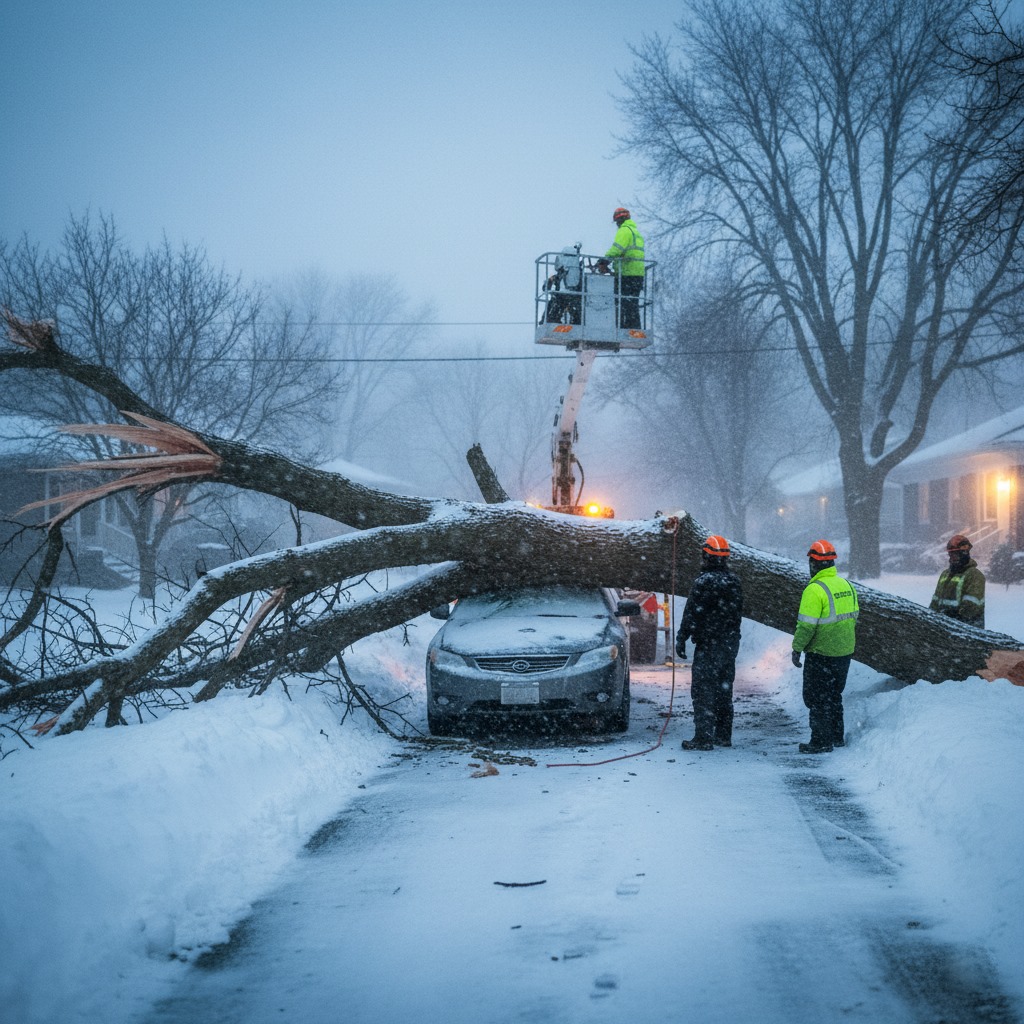Planning to remove dead tree branches this weekend? Then read this guide first.
Normally, trees in Buffalo, NY, such as elms, maples, and oaks, live many more years. However, with aging or other concerns, some limbs can eventually die, causing various hazards.
Some other causes of branch death are disease, pests, damage by weather, and environmental stress. But if it’s already dead, is it necessary for a dead branch removal? Why?
Yes, Cause a dead limb can cause serious risks, such as a fall on your roof. Who wants to wake to the sound of a dead branch crashing on your roof at night?
But just attempting to remove dead tree branches without a proper plan or knowledge can cause more harm than we think. Let’s see why.
Common Causes of Dead Tree Branches in Your Garden
- Diseases: The Main reason for tree diseases is fungi, bacteria, or harmful pathogens. They enter the vascular system and block nutrients and water from circulating, and exhaust the tree, leading to the death of branches.
- Pests: These annoying pests can cause death in several ways by sucking sap, chewing, preventing photosynthesis, introducing pathogens to vascular systems, and causing stress, especially pests like emerald ash borers.
- Weather conditions: Strong wind storms, snow buildup on branches, and ice buildup, too much rain, and even drought can exhaust and cause damage to limbs.
- Old age: With years of growth, trees naturally lose unnecessary old branches.
- Wrong trimming and pruning: When cut too near the trunk or cut using improper angles, improper times of year can cause branches to die or rot.
A dead branch of the tree is not only an eyesore, but it is also an indicator of the fact that the tree requires some work related to dead tree branch removal.
Why You Should Never Remove a Dead Tree Branch Yourself Without Proper Knowledge?
Yeah, we know we all have to try to remove dead branches from trees by ourselves even once, but that may be the reason for the sudden death of a perfectly fine maple tree in your backyard in Buffalo, because improper pruning can even cause the whole tree’s death.
Also comes with a number of other risks for ourselves, the environment, and properties..
1. Fall Risk of Unstable Branches
If you only assess the branch and attempt tree limb removal, there may be a hidden risk because these limbs are unstable. We cannot ensure it won’t break while we are attempting to cut it.
Deadwood is normally hard and may snap and break at any moment. Small branches would even cause injuries if they happened to fall on you or property.
2. Damage to Property
Dead branch hanging over your vehicle or roof? It may be right on your property. Without a proper understanding of how to hold limbs while cutting for tree branch removal, the chances of accidents are high. If it destroys your neighbour’s fences, it may double the expense.
3. Health Hazard
We have seen many cases where people forget or fail to use gloves, eye protection, or helmets and get them with scratches, eye injuries, or even head injuries from hitting branches.
4. Incorrect Cuts Can Harm Trees
Incorrect cuts can accumulate water and cause fungal diseases, attract pests, as already wounded places are easy targets for sucking or entering the vascular systems. And they are easy places for viruses like diseases to enter your tree. Also, wounds and rotting reduce the natural healing ability of a tree cut.
The process of dead branch removal without proper equipment can result in stress to plants and cause death.
Even minor ignorances we make while attempting dead tree branch removal may lead to big tree problems.
Read our friendly blog for more insights: Tree removal in Buffalo, NY: What homeowners must know?
Tips for Handling Dead Tree Branches
Then let’s see how to attempt removing dead tree branches safely. But remember this is only for manageable, small branches.
- Remove dead branches from trees if they are easily accessible (low ground, not heavy). Without professional equipment, one should not attempt to prune large or high dead limbs of trees.
- You can try knocking on your branches to ensure they are hollow or not.
- You can use shears for thin dead branch removal, a handsaw for a thick limb, and a handsaw to cut the thicker ones. Untrained chainsaw use can cause serious risks.
- Cut a little on the underside of the branch so as not to tear off the bark.
- Soak your cutting equipment blade in a fungal solution to avoid introducing pathogens to the tree.
- Remove a dead tree limb using a cut of 45 degrees. Cut right before the collar of the branch.
How to Get Dead Branches Out of Trees Safely
Curious how to safely do dead tree branch removal, it is necessary to pay attention to the preparation and precautions.
- First check on tree size, branch size, branch thickness, hollowness, and plan the cutting places before which branches and which place to cut first to ensure that the branch won’t suddenly fall or snap other branches. High air hanging or large branches are unpredictable.
- If the limb is reachable, cut branches standing up on the ground and not climbing dangerously. If possible, try to use a saw with a long handle. To safely remove dead branches from trees, you must be in a stable position.
- Bending or leaning while climbing on a tree branch can cause the risk of falls and accidents. If it’s necessary to climb, use a safety harness.
- Wear gloves, eye protection, and a helmet to ensure no injuries because even a small branch can cause injury from snapping.
These steps will enhance your safety during the management of dead tree branch removal, including those of small branches.
Learn more about how to get rid of dead tree branches safely with pruning with the U.S. Forest Service: Here.
Why You Should Not Ignore Dead Tree Branches: Hidden Risks
The inability to remove dead tree branches may cause some issues.
- A dead branch can fall at any time, causing hazards to you and your property.
- Can fall on utility lines.
- Dead tree branches can hinder its growth.
- It is the perfect place for the inhibition of pests and diseases, which can cause infestations to healthy trees and vegetation.
- Dead plus dried wood can be a reason for a wildfire.
- Your tree branch on a neighbour’s property may be a legal issue, plus insurance problems due to ignorance.
By ignoring dead branch removal, you put your safety at risk, plus may be the reason for future money wastage.
Tips for Maintaining Tree Health and Preventing Dead Branches
- Check trees twice or more annually for dead limbs.
- Pruning small branches early removes the weak branches before they develop into large, dead tree branches.
- Check for pests like Emerald Ash Borer. Take precautions.
- Add necessary nutrients if possible. You can use mulch. Healthier trees can easily fight diseases.
These practices will decrease the number of dead branches and increase their longevity in Buffalo, NY.
How a Professional Tree Service Removes Dead Branches from Trees Safely
- They follow safety precautions and use all the safety gear.
- Have all the equipment for properly removing dead tree branches: chainsaws, grinders, and even cranes.
- They plan everything carefully beforehand so that there is no property damage.
- Know the science behind pruning and trimming to remove dead branches from trees. Every cut is precise and improves tree health.
- You get insurance protection.
- They cut down trees during dormancy periods, such as late winter. So buffalo trees can heal quickly. DIY attempts are much more difficult in winter.
Conclusion
A dead tree branch is hazardous, unpredictable, and dangerous. Understanding the reasons behind why they occur, the dangers of DIY attempts on dead branch removal, and how to handle them with safety precautions is the key to protecting yourself and your property.
Following the appropriate guidelines for the process of removing fallen branches of trees is a safe way of maintaining a healthy and safe yard.
Periodic inspections, small precautionary actions, and systematic dead branch removal techniques all combine to manage dead branches effectively and with minimal risk. Always remember that safety is the priority, and your trees will appreciate the care you provide them.
Bonus: This guide will help you understand the importance of seeking the help of a professional for dead tree branch removal.
Are you in need of a tree service for dead branch removal? Then trust Branch Specialist Tree Service, Buffalo, NY, for professional dead tree branch removal services in Buffalo, NY.
Visit: Branch Specialists Tree Service Buffalo, NY
Call: (716)400-0763
Frequently Asked Questions About Dead Tree Branch Removal
Q1: Is it possible to know whether a branch is dead?
Do a scratch in the bark; if it shows a brownish colour with a dry surface, it is possible that it is dead.
Q2: Is it safe to remove a dead tree limb myself?
Large branches are risky to attempt. For small, low-ground limbs, you can attempt DIY. But remember to use safety precautions.
Q3: How to get rid of dead tree branches in trees in the safest manner?
Be careful in planning and work on the ground and use protective gear. However, do not climb wobbly branches.
Q4: At what time of the year works best for the removal of dead branches?
The best time is in late winter or early spring when trees are dormant and heal at a faster rate.
Q5: What is the significance of proper cutting technique in the removal of dead tree branches?
Proper cuts also avoid any damage, have a low chance of disease, and the tree is cured more quickly.

